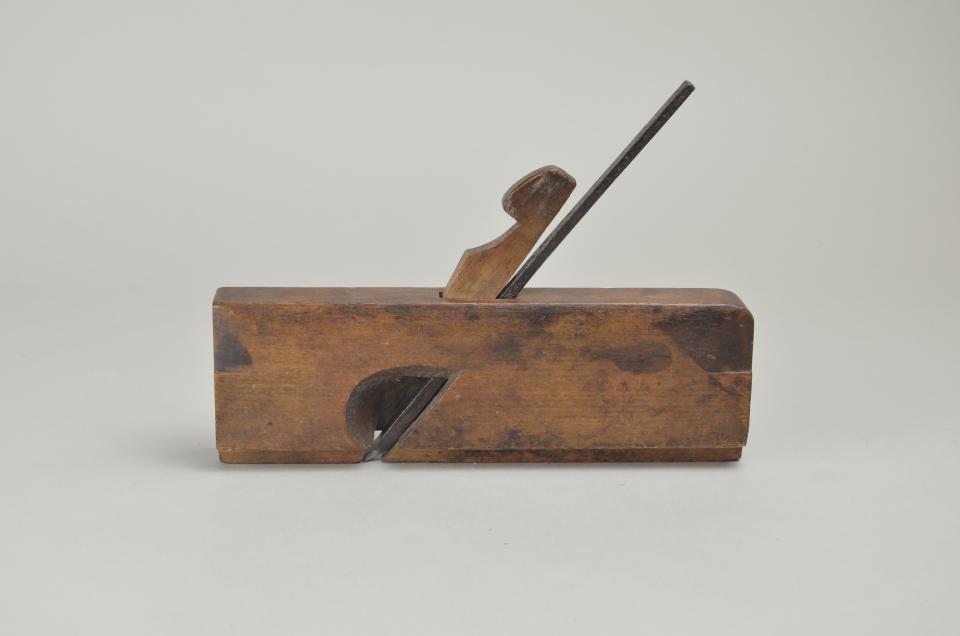
Length 20.2cm x Width 2.8cm x Height 15.4cm
a- Length 20.2cm x Width 2.8cm x Height 6.5cm
b- Length 9.7cm x Width 1.9cm x Height 1.0cm
c- Length 19.0cm x Width 0.9cm x Height 0.6cm
Grooving plane comprised of three parts, a rectangular wooden body with an angled cutout through the middle (a), a wooden wedge that tapers to a point at the bottom and is rounded at the top with a finger/hand cutout (b), and an iron with an angled blade at the bottom to match the grooving profile on the body of the plane (c). The wedge and the iron fit together inside of the cutout in the plane and extend out of the top. The wedge holds the iron in place as it cuts the wood below the plane. Stamped on both the toe and the heel of the plane is "I BLOWER".
Grooving planes are used to cut straight grooves, or rabbets, into a working piece. They are traditionally used for drawer bottoms or rear walls. They can be used in conjunction with a corresponding tonguing plane, which creates two parallel slits in a piece of wood. These create two pieces that fit together perfectly for joining work. Other names include dado planes, ploughing planes and matching planes when combined with a tonguing plane.
